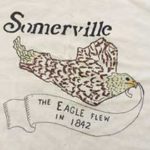 Eagle Feathers #284 – Cooperstown
Eagle Feathers #284 – Cooperstown
By Bob (Monty) Doherty
No one knows exactly who or where baseball was created. The spirit of the game really goes back to our own backyards. Colonial New Englanders mixed Cricket, a game played with a bat or striker, and Rounders, a British children’s game, which gradually evolved into the American sport. Through the years, the interest in the game has varied between fair-weather fans, die-hards, traditionalists and collecting fanatics.
One of the many legends is that Civil War hero, General Abner Doubleday, invented the game while attending school in Cooperstown, New York in 1839. Today, the debate still goes on (185 years later), with claimant Fire-chief Alexander Cartwright in the proverbial lead.
Another ghost of a chance for baseball’s origin is James Fenimore Cooper (The Last of The Mohicans), America’s first novelist and the son of the founder of Cooperstown. During his prolific career, he wrote The History of the United States Navy, the first history of Cooperstown, and thirty-four novels, one of which describes early ballplaying. He also wrote many naval biographies, one including The Life of Captain Richard Somers, the namesake of our city.
For a small American city, four miles by two miles, Somerville’s mark in the history of baseball soars from its eagle-shaped border to the National Baseball Hall of Fame and Museum at Cooperstown.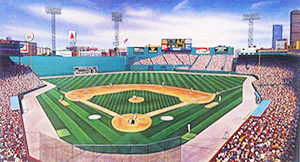
- Fenway Park, home of the Red Sox and the 111-year-old shrine to Major League Baseball, is the oldest in the nation. Charles Taylor, founder of The Boston Globe newspaper, was a Somerville Alderman who raised his family on Belmont Street and built the famous stadium.
- John Taylor, Charles’ son, didn’t like the name of his father’s team, so he changed it from the Boston Puritans to the Boston Red Sox. The reason for the odd spelling of Sox is that he did not want to completely plagiarize the name of his favorite team, the Cincinnati Red Stockings.
- In 1914, Somerville’s Brother Gilbert Cairns, a graduate of St. Joseph’s High School in Union Square, discovered Babe Ruth, the future “Sultan of Swat” and one of Cooperstown’s first entries into its Baseball Hall of Fame.
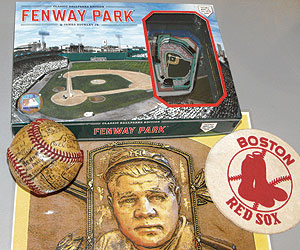
- Daniel “Danny” MacFayden played baseball for Somerville High School. This spectacled baseball pitcher with horn-rimmed glasses tossed for both Boston and New York. He once struck out Hall of Famers Babe Ruth and Lou Gehrig back-to-back.
- In 1910, baseball fan President William Howard Taft was the first Commander in Chief to throw out the first pitch in baseball. The tradition still exists today, and the ball he threw is at Cooperstown. Taft also originated the “Seventh Inning Stretch” during the same game. Two months later, Somerville honored him with a Fourth of July parade and a city-wide tour.
- Timothy Keefe was one of the most impressive pitchers in early professional baseball. He was enshrined into the Baseball Hall of Fame in 1964. He was born on Somerville’s Springfield Street on New Year’s Day in 1857. He lived a tale of two cities, living also in Cambridge where he is buried and honored by Tim Keefe Square.
- Somerville’s, Harold “Pie” Traynor learned to play ball at Trum Field, often playing barehanded. He was inducted into Cooperstown’s Baseball Hall of Fame in 1948, the first third baseman so honored. He was a manager, scout and radio broadcaster, but more importantly, the best player at that position for ten years straight.
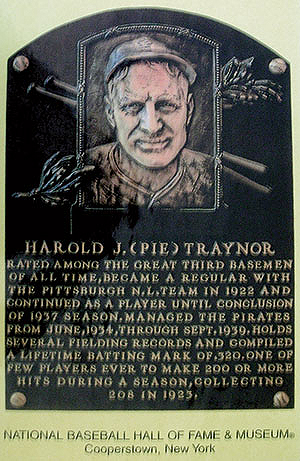
Cooperstown has an acclaimed statue honoring one of the most famous poems about baseball, Casey at the Bat. The poem, 125 years old this year, had two possible authors. One was Ernest Lawrence Thayer, a Harvard-educated wealthy mill owner. The other was Somerville’s George Whitefield D’vys, a Houghton Street writer and correspondent. D’vys was the longest claimant until after many years when the disputing finally stopped. Whatever side you take, either the David and Goliath or the Rags to Riches wannabe side, the poem triumphs in Cooperstown.
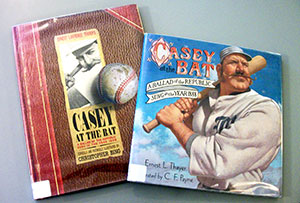















Reader Comments